The ASUS TUF Gaming 850W Gold PSU Review: Tough But Fair
by E. Fylladitakis on August 31, 2023 9:00 AM EST- Posted in
- Cases/Cooling/PSUs
- PSUs
- Asus
- 80Plus Gold
- ATX v3.0
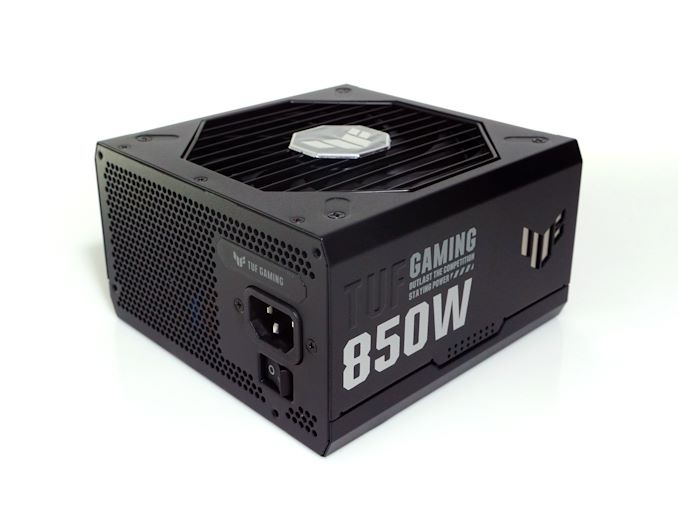
Though ASUS as a company needs no introduction to regular AnandTech readers, even for us it's easy to overlook just how vast their range of product lines is these days. As the company has moved beyond PC motherboards and core components to kept diversifying over the years, they've established whole subsidiary brand names in the process, such as the “Republic of Gamers” or “ROG”. Nowadays, the ASUS logo can be found on almost every PC component and peripheral there is, from mouse pads to gaming laptops.
One of the many series of products ASUS is supplying under its brand name – and that, somehow, we've never reviewed up until now – is a rather extensive array of power supply units. The company splits its units into three main series, the ROG, the TUF Gaming, and the Prime, all of which are targeting higher segments of the market. In fact, ASUS is fairly rare in this respect; unlike most other manufacturers, ASUS largely stays out of the low-to-middle range of the market altogether, instead focusing on the more lucrative premium and gaming segments.
Today's review directs its focus towards ASUS's TUF Gaming series, which is – in our opinion – the most versatile series that the company currently markets. The TUF Gaming units are designed with long-term reliability and high performance in focus and are being marketed accordingly. The new 850W Gold variant of this series aligns with Intel's ATX 3.0 design guidelines, with the 80Plus Gold certification and 10-year manufacturer’s warranty as the major highlights, and retails for a reasonable price tag.
| Asus TUF Gaming 850W Gold Power Specifications ( Rated @ 50 °C ) |
|||||
| RAIL | +3.3V | +5V | +12V | +5Vsb | -12V |
| MAX OUTPUT | 25A | 25A | 70.8A | 3A | 0.8A |
| 130W | 850W | 15W | 9.6W | ||
| TOTAL | 850W | ||||
| 80 Plus Rating | Gold | ||||
| AC INPUT | 100 - 240 VAC, 50 - 60 Hz | ||||
| MSRP | $111 | ||||
Packaging and Bundle
ASUS is known to be careful with their packaging and the box that the TUF Gaming 850W Gold is supplied in is no exception. The artwork on the box is detailed, with plenty of information to be found on the sides and rear of the box. The box is sturdy and the unit is well-protected inside to ensure safe shipping.
A fair bundle can be found inside the box of the TUF Gaming 850W Gold PSU. Aside from the typical AC power cable and the mounting screws, ASUS also supplies several cable ties, three quality cable straps, and a thick manual in 30 languages. There is also a “certificate of reliability” that indicates which tests the capacitors and chokes of the units had to pass for ASUS to use them. Most of them are done in accordance to the MIL-STD-202 and MIL-STD-810H standards, which gave ASUS the ground to boast about “military-grade reliability”. The tests are performed by iST, an independent laboratory based in Taiwan.
The TUF Gaming 850W Gold is a fully modular design, allowing for the removal of every DC power cable, including the 24-pin ATX connector. All of the cables are black, with black connectors and individually sleeved wires, including the ATX 24-pin and the new 12VHPWR cables. It is interesting to note that the total number of connectors is fairly low for a unit with that kind of capacity.
| ASUS TUF Gaming Gold | ||
| Connector type | Hardwired | Modular |
| ATX 24 Pin | - | 1 |
| EPS 4+4 Pin | - | 2 |
| EPS 8 Pin | - | - |
| PCI-E 5.0 | - | 1 |
| PCI-E 8 Pin | - | 3 |
| SATA | - | 5 |
| Molex | - | 4 |
| Floppy | - | - |
The ASUS TUF Gaming 850W Gold PSU
External Appearance
Externally, the TUF Gaming 850W Gold PSU is in direct contradiction to the “military” theme ASUS's marketing is heavily relying upon. The reason is that military designs are supposed to be entirely minimal and inconspicuous, while the designer of the TUF Gaming 850W Gold PSU practically left no part of the body untouched in an effort to create an aesthetically appealing product. Chamfered edges, embossed designs, graphic prints, debossed lettering – this unit has it all. The chassis is just 150 mm deep, which ensures compatibility with all but the smallest ATX-compliant cases.
Both sides of the chassis are heavily decorated but they are not identical. A cutout of the series logo can be seen on the left side, serving as a little cooling vent. There is no such cutout on the right side and the series logo is printed on the chassis instead. The entirety of the top side is covered by a sticker with the electrical specifications and certifications of the unit. The fan cutout at the bottom side of the TUF Gaming 850W Gold PSU is hexagonal instead of round.
Naturally, the front side of the PSU is home to the connectors for the modular cables. A basic legend is printed directly onto the body of the PSU in white paint. The series logo is subtly etched across the top part of the front side. The rear side is typical, with just the AC power receptacle and a basic on/off switch in sight.
Internal Design
The fan responsible for the cooling of the TUF Gaming 850W Gold PSU is a dual-ball bearing engine fan made by Champion, a Chinese manufacturer whose we very rarely encounter the products of inside PC components. The 135mm CF1325H12D has a maximum speed of 2100 RPM, which is very high for a fan of that size. ASUS markets the fan as an “axial-tech” technology fan, which basically is a plastic ring that connects the outer part of the fan’s blades, supposedly increasing the fan’s pressure.
The OEM behind the creation of the TUF Gaming 850W Gold PSU is Great Wall, a Chinese OEM that became known in the Western markets only a few years back when Corsair decided to use them for several of their mainstream products. The TUF Gaming 850W Gold is based on a platform that we have not encountered before and certainly is one of the latest Great Wall designs, developed to comply with the ATX 3.0 design guide requirements.
We can see that the main switch and AC plug receptacle are attached to a vertical PCB that also hosts a few of the filtering stage components, with the rest on the main PCB. The filtering stage is typical, totaling four Y capacitors, two X capacitors, and two filtering inductors. It leads to a dual input rectifying bridge configuration supplied by Leshan Radio Company (GBU15K), a Chinese company that we have never encountered before. The passive APFC components are two Rubycon 420V/390μF capacitors and a sizable filtering inductor.
All of the active components before the main transformer that need cooling are attached to a single long heatsink across the edge of the PCB. The primary side inversion circuit is a typical half-bridge LLC topology, with the two switchers also supplied by a company that we have never seen before (WAYON) and we could not find any datasheet for these particular chips (WMJ36N6N65SF2). Considering the PSU’s efficiency rating and half-bridge configuration, these definitely are very efficient low on-resistance MOSFETs but we have been unable to come by their exact specifications.
On the secondary side of the main transformer, six transistors from yet another manufacturer that we have never seen before (Jinlibo Electronics 4NA1R4C-A) form a conversion circuitry that generates the main 12V line. The secondary 3.3V and 5V lines are generated on the vertical daughterboard that is attached both to the main and the vertical PCB with the unit’s connectors. All of the electrolytic capacitors on the secondary side are supplied by Nippon Chemi-Con and Rubycon, while the solid-state capacitors are supplied by Nippon Chemi-Con and Nichicon.


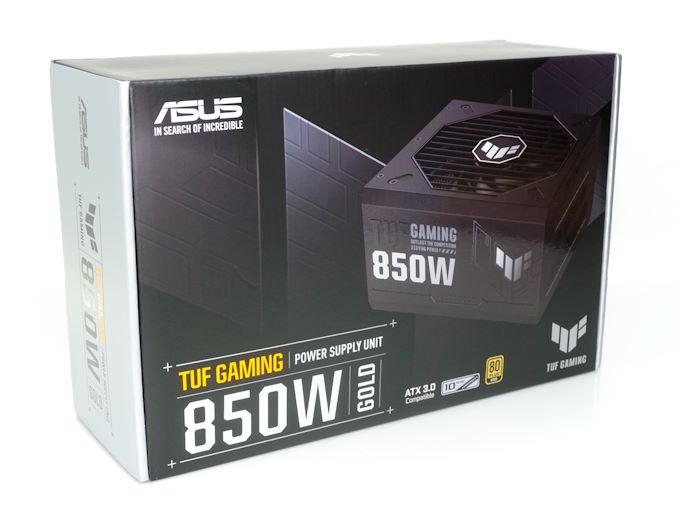

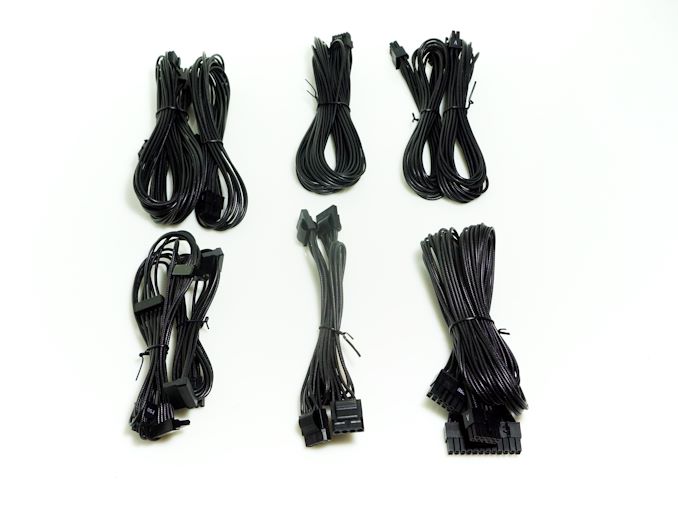
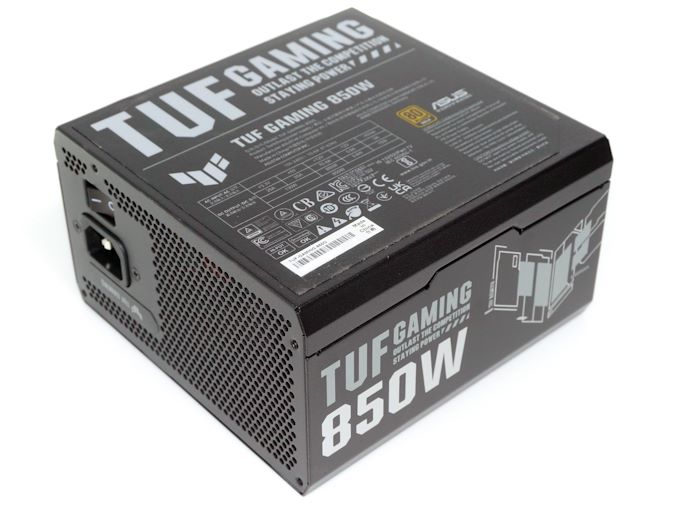
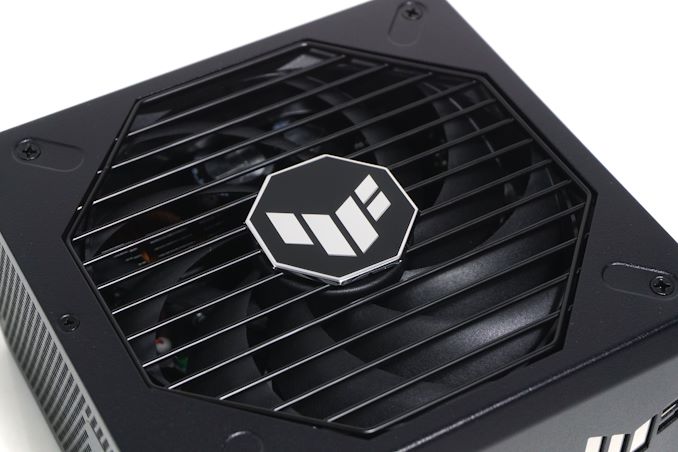
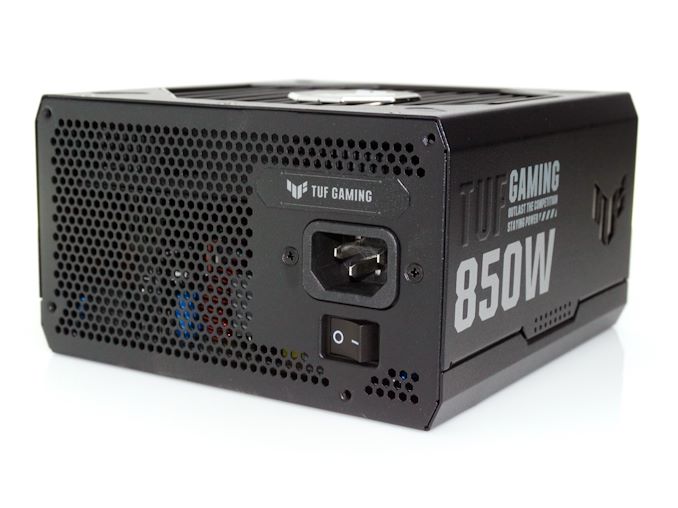
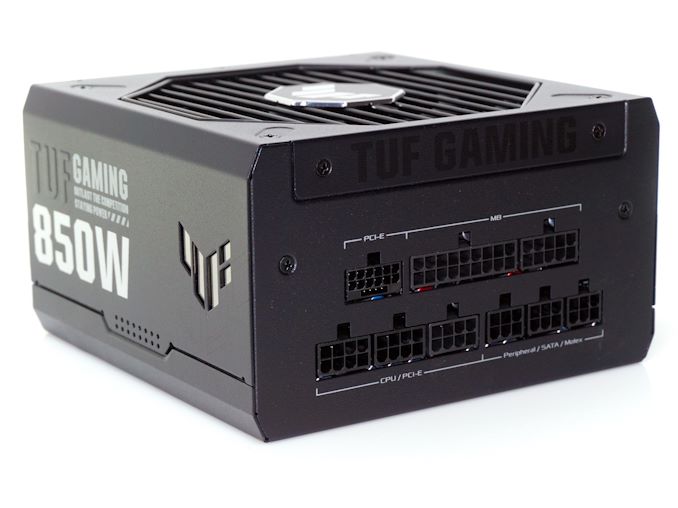
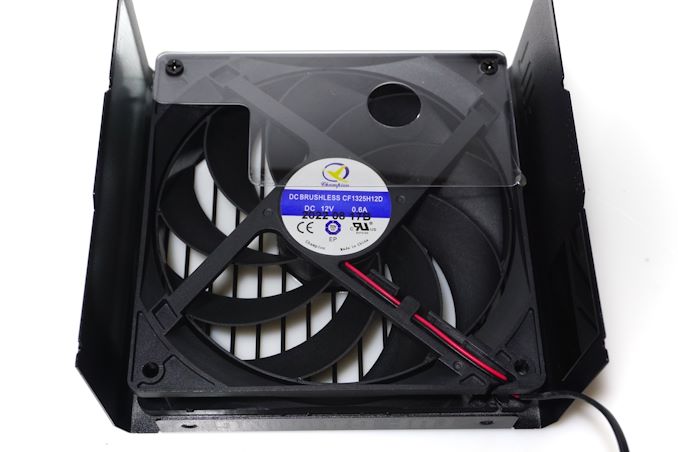
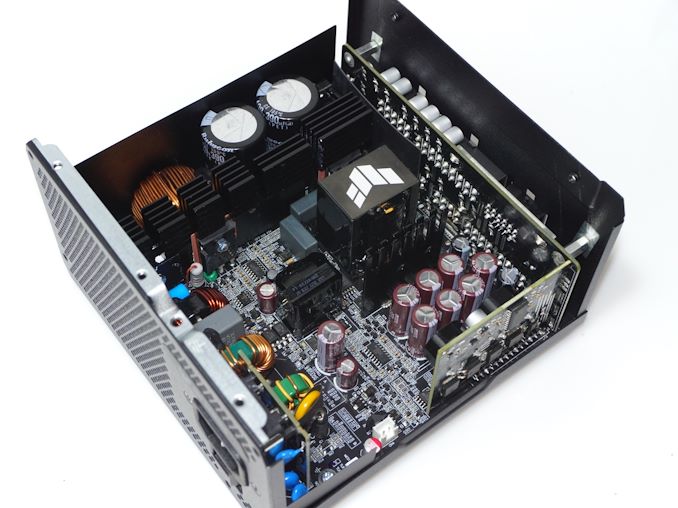

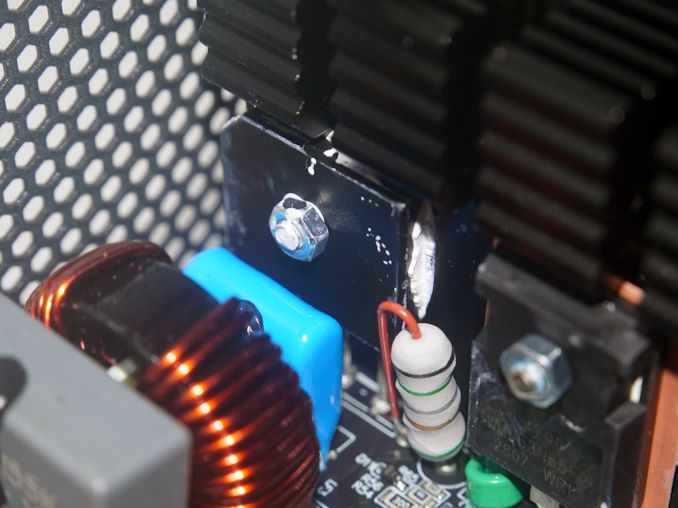
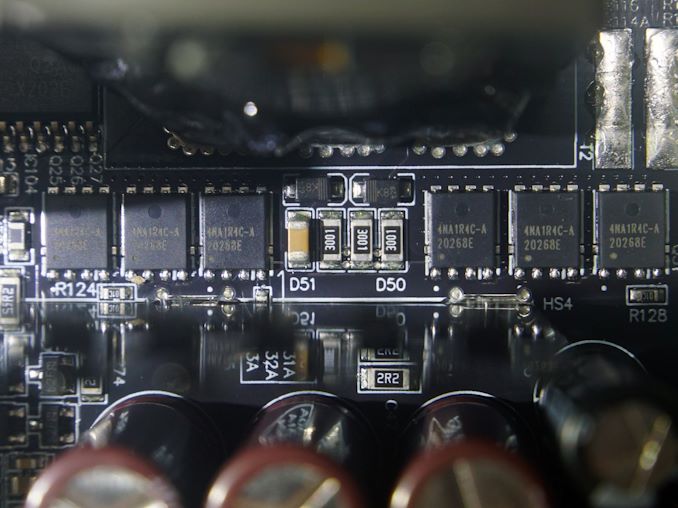
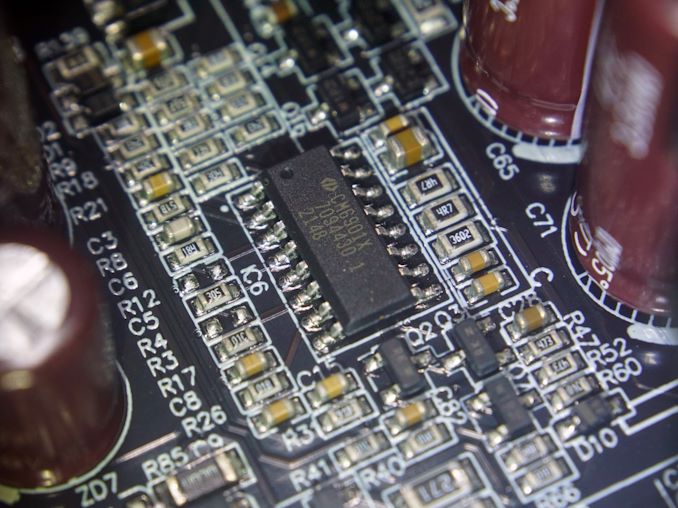
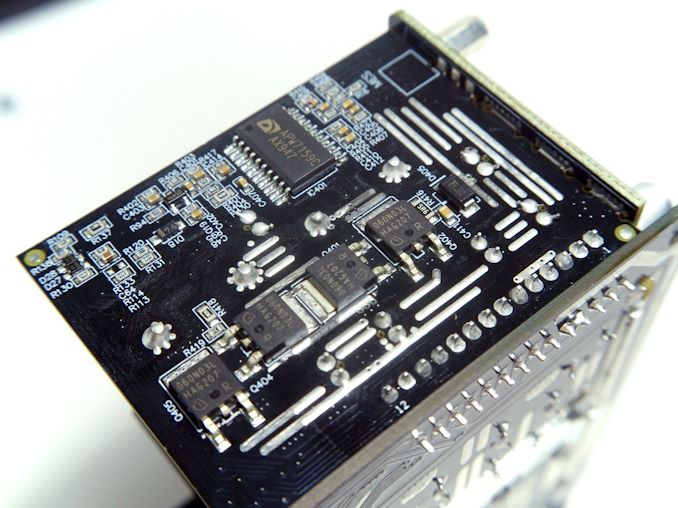

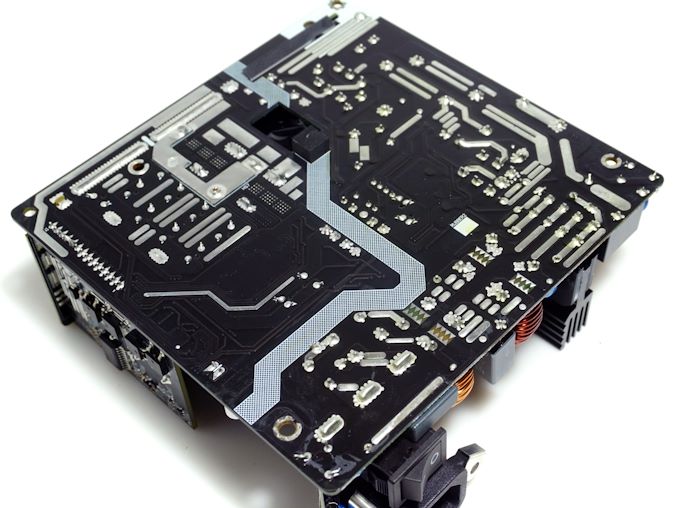








8 Comments
View All Comments
Threska - Thursday, August 31, 2023 - link
Minimalistic in it's sameness. Pretty much only thing bringing them out of that is different transistors and RGB.ingwe - Thursday, August 31, 2023 - link
Given the positive conclusion, I think the article headline/title should be changed. Based on that I expected a negative take on the product based on that. Meaning I expected "tough but fair criticism" based on the price/performance etc.Oxford Guy - Thursday, August 31, 2023 - link
He was obligated to have Tough in there because the product is marketed with that word ('TUF').Tough and Fair folk are Great Wall military types, you know.
Igor_Kavinski - Friday, September 1, 2023 - link
Thank you so much for the great review!Samus - Saturday, September 2, 2023 - link
The only thing missing from this PSU is a fan profile switch - something present on many other PSU's in this class, Seasonic "Hybrid Mode" EVGA "ECO Mode" etc.This would greatly help my anxiety when running in the 500w power envelope (which is often where my systems hovers while gaming (depending on the game) with in i7-12700k and RTX 4070Ti. CPU hits PL1 sometimes in Battlefield 2042 but almost no games hit PL2, which would increase the system total power consumption to 650w assuming the GPU was loaded up too. Furmark + CPU burn simulates this, and to get a total system load draw, I have a disk IO torture test running with all SSD's, HDD's, and a few USB 3.0 flash drives to pull some bus power.
This makes an 850w PSU unnecessary for my system, but a little headroom is good for efficiency, longevity and upgradability. The problem is longevity is questionable if this thing is constantly running hot and the fan doesn't turn on at 500-watt sessions. The capacitors especially are rated for a fixed amount of hours at 95-105c and the further you stay away from that range, the longer the cap will last. And tin\lead free solder is not good with heat cycling above 105c that this PSU can hit if ambient temps are high.
Overall its a great product ruined by a bad cooling curve. The fan itself is questionable considering it doesn't even reach its 'rated' RPM. Is it just me or is the appeal of a silent PSU when drawing 500+ watts of power a weird concept. More than likely you are in a game (no single CPU and disk IO will draw 500w) except in edge cases where this PSU is oddly used in a workstation for GPU-based rendering. And if you are in a game, your other components cooling systems are going to greatly overpower whatever sound pressure this PSU's fan hits.
Claudius-07 - Sunday, September 3, 2023 - link
Can someone please explain to an old person: I have a new mobo and it has DDR5 and has 2 8 pin power connectors at the top of the mobo for CPU power. I have the new mobo and a new CPU and the RAM. The video card I bought is a RX 6800. It also has 2 8 pin power connectors. I do not understand, do I need a NEW Power supply ATX 3.0 and PCI5? Do I just need a PS that has at least 4, 8 pin connectors?E.Fyll - Monday, September 4, 2023 - link
Any PSU with two EPS and two PCI Express connectors will do. Note that EPS and PCI Express connectors are different, even if the number of pins is the same. That system does not need an ATX 3.0 compliant unit nor a PCI-E 5.0 connector.RomanPixel - Wednesday, September 6, 2023 - link
Aww man, they didn't change the 12VHPWR connector to a 12V-2x6 before pushing this out.